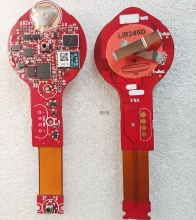- Flex PCB Blog
- PCB Assembly Blog
- How to solve the problem of PCB warping deformation after welding large copper bar?
- About PCB Assembly
- QFP and BGA and the Development Trend in PCB assembly
- Why some components need be baked before reflow soldering
- About Flex PCB Assembly
- Manual Soldering in SMT Assembly Manufacturing Process
- BGA Components and BGA Assembly
- Quick Understanding for PCB Assembly Process
- About SMT Assembly (Surface Mount Technology)
- About THT Assembly (Through-Hole Technology)
- About Reflow Soldering
- About_Wave_Soldering
- PCB Assembly Inspections and Tests
- Panel Requirements for PCB Assembly
- About SMT (Surface Mount Technology)
- FPC Research Blog
Materials Preparation
1. PCB (print circuit board):
Check each board and make sure there is no short circuit, broken circuit, blurred silkscreen or any other quality issues.
2. Components:
Make sure the component is complete, pay attention to the foot oxidation of the component, also need to check there is no oil and the polarity of the components.
3. PCB Stencil and Solder Paste:
Check the PCB stencil and ensure the apertures were opened correct. Take out the solder paste from the freezer, It needs thawing, stirring.
4. Gerber file, BOM list, assembly drawing, pick&place file:
Check all files are ready and no problem on the desk.
5. Tools:
Soldering iron, tin, wire stripper, component box, torch, pliers, heat gun and so on.
Bare Board Baking: Ensure the dryness of PCB
Solder Paste Printing:
The solder paste stencil printing machine accurately printed to PCB pad.
Pre-Soldering Inspection:
Check the boards to ensure that there is no problem for soldering.
High Speed Mounting:
The pick and place machine can attach the components accurately to the PCB plate by drawing the components.
Visual Inspection Before Re-Flow:
Check the board to ensure that there is no problem for Re-flow soldering.
Re-Flow Soldering:
Install components onto the PCB and put it in the reflow machine, the components are soldered by using drying area, the preheating area, the welding area, and the cooling zone.
AOI:
After the print circuit board has completed the soldering, the AOI instrument is used to detect the soldering of the PCB, including the assembly quality, parts missing, parts orientation, etc.
DIP plug-in processing:
The DIP production line colleagues make a simple processing of the plug-in material and insert the corresponding position of the board.
Wave Soldering:
Put the plugged board into the wave soldering, the soldering of PCBA board is achieved through the spray welding flux, preheat, wave peak soldering, cooling, etc.
Cleaning:
To make sure there is no defects on the board after wave soldering, which usually needs to be washed.
ICT/FCT:
Generally, the PCBA board should be ICT, FCT, aging test and program burning, in order to ensure the normal operation of the PCBA function and reduce the rework rate in the later period.
Quality Checking:
The finished product needs to be sent to the quality inspection department for quality checking, make sure there is no quality issue before packing.
Packing:
Coming to the last part, we use Silica gel, buble film, normal vaccum packing for packing
The above is the quick process of standard PCB assembly. We believe that you can quickly understand how PCB Assembly work after you read it.




